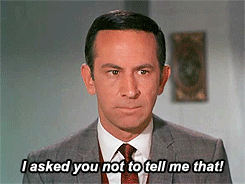Why SMART Isn’t Smart – Importing FRAND’s Flaws Into Copyright

This piece is cross-posted on Patent Progress.
“Intellectual property,” as a term, is a problem. It groups together areas of law that, while they may share some things, are fundamentally disalike. Copyright law has compulsory licenses and an independent creation defense; patent law has neither. Trademarks aren’t duration limited; copyrights and patents are. The tendency to treat all these areas alike is problematic. The main tie that binds these disparate concepts together is simply that they deal with a selection of intangible property rights.
That tendency is on full display in the recently released Strengthening Measures to Advance Rights Technologies (SMART) Copyright Act. A recent piece by Prof. Eric Goldman outlines a number of problems with SMART, including noting the influence of the “fair, reasonable, and non-discriminatory” (FRAND) requirement in standard-essential patents (SEPs) on SMART. This post goes into more detail on what FRAND can teach us about SMART.
Get Smart on SMART
Among other things, likely due to dissatisfaction with the “standard technical measures” (STMs) provision of Section 512 of the Digital Millennium Copyright Act (DMCA), SMART instructs the Copyright Office to select “designated technical measures” (DTMs) for dealing with copyright and requires service providers to accommodate those DTMs after selection. And once something has been designated as a DTM, a “covered service provider shall use commercially reasonable efforts to accommodate and not interfere with designated technical measures that apply to that covered service provider.” If they fail to do so, there are monetary penalties as well as potential injunctive relief. The selection process is modeled after the DMCA Section 1201 triennial rulemaking process, a process that is not exactly considered a model of efficiency or quality.
So we have a process by which many entities suggest a technological measure, of which some portion are selected to be the standard technology everyone must follow. This starts to sound a lot like standard-setting, and that’s where the SEP component comes into play. And since companies are already litigating patents on copyright-protection measures in standards, it’s safe to assume that they’d be litigating DTM patents as well.
Would You Believe Combining Copyright And FRAND Isn’t SMART?
Imagine that the first Copyright Office rulemaking has concluded and it’s selected several DTMs. Setting aside all the concerns over incompatibility between DTMs, the questionable efficacy of DTMs for their intended purpose, and similar specific concerns, FRAND/SEP case law provides a whole new set of concerns to consider.
First, there are almost certainly patents that cover the selected DTM technologies, whether they belong to the proposer of the DTM, other parties that participated in the DTM process, or potentially to some uninvolved party. In FRAND litigation, a party that’s able to pay for a license will almost never be subject to a U.S. injunction for patents owned by the first two classes; the U.S. courts will enforce the obligation to license undertaken by the patent holder and generally find that damages are an adequate remedy.
But for litigation over patents that would cover a SMART DTM, that’s no longer a safe assumption. SMART’s injunction provision does not explicitly reference the principles of equity and might not incorporate eBay’s traditional equitable remedy test. This means that DTM patent holders might well be able to request injunctive relief, even if they’re under a licensing obligation, resulting in opportunistic conduct where a DTM holder “obtain[s], through the threat of exclusion, higher compensation for SEPs than they would have been able to negotiate prior to standardization.” This, in turn, per DoJ, “can deter investment in and delay introduction of standardized products, raise prices, and ultimately harm consumers and small businesses.”
In a similar vein, if you’re a service provider who wants to start up a new covered service, then you either need to obtain a license from this competitor or launch at risk of injunction. But the DTM patent holder might also have their own services that they don’t want you competing with. If the DTM patent holder simply doesn’t offer you a license—even if they’re legally obligated to—then your choice reduces to filing a lawsuit against a well-funded entity that wants to see you fail and waiting for its conclusion before launching your service, or else launching at risk of damages and injunction taking you down.
That brings up the next concern—DTM patents as a barrier to entry.
That’s The Second Biggest Barrier To Entry That I’ve Ever Seen!
In the SEP space, patent holders have essentially been given legal blessing to select who they want to provide a license to. (This is an incorrect interpretation of the FRAND non-discrimination requirement, but it’s how it’s currently applied post-Qualcomm.) In particular, SEP patent holders are not currently being required to license potential competitors, so long as those competitor’s customers can obtain a license. SMART presumably would function along similar lines, given use of similar terminology in the statute.
And that means that if I’m a startup who wants to provide a new DTM that requires me to use some DTM patent to provide compatibility with DTMs, DTM patent holders can refuse to license me. In other words, once a DTM patent holder has their patent enshrined in regulation, they can box out any potential competitors by refusing to provide them with a license. Even if a company decides to enter the DTM market, they’ll be at a disadvantage because they can’t provide a one-stop shop for DTM licensing—their customers will also need to obtain a license from the DTM holder.
That’s bad for lots of reasons. It reduces the pace of innovation in DTMs by helping block new competitors from entering the market. It helps DTM patent holders extract higher than reasonable royalties. And all of that ultimately results in increased prices and/or reduced service quality for consumers. I don’t think that that’s what SMART’s authors intend—but it’s the likely outcome, judging from the SEP experience.
What’s more, DTM licensees—service providers—will face the royalty stacking problem that’s well understood in the SEP world, where the number of patents required to license add on top of one another to the point where licensing fees exceed likely profits from the service. And at that point, the service provider often rationally decides that it’s not worth providing the service and terminates it, further reducing consumer benefit.
And even if the bill is re-written to require licensing competitors, there’s still a practical problem. As discussed above in the context of service providers, if you’re a DTM startup and you’re trying to get a major copyright holder—e.g., Disney—to license their DTM patents to you, they can just not respond. Sure, you can sue them to try to force them to provide you with a license, but that’s a lot of money you’re going to be spending for the opportunity to pay Disney licensing fees. And Disney has a lot more money to litigate with than you do. If it’s to the DTM owner’s advantage to block your DTM from entry—perhaps they’re making money from their DTMs, or feel that your DTM doesn’t benefit copyright holders enough—then there’s a real risk of refusal to license, even if there’s a legal obligation to do so.
Missed It By That Much
Letting DTM patent holders pick and choose winners in the new Internet services arena is a terrible idea. Letting them pick and choose winners in the DTM arena is nearly as bad. There’s a reason people are telling the bill’s sponsors that SMART would “destroy[] the internet” or be a “massively consequential decision” for the Internet.
Hopefully, the response from the sponsors will be something other than a classic Get Smart quote.









